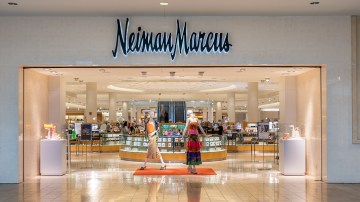The luxury fashion industry has historically benefited from wealthy tourists traveling around the world to do their shopping. But in the first half of 2025, tourism to many of fashion’s traditional destination markets has been slumping.
In Las Vegas, where most tourists actually come from Canada, travelers arriving in the city from Canada dropped by 18% this spring compared to spring 2024. Overall, international travel to the U.S. dropped by 3% year-over-year in June, marking the latest in a series of monthly declines since the beginning of the year that has put international tourist rates down by 20% compared to 2019. Hotel bookings in the Western U.S. by travelers from Europe were down by 35% in May.
“Tourism has always been a quiet but critical engine for fashion, especially luxury,” said Mac King, the co-founder and chief revenue officer of Domaine, a Shopify agency that works with top fashion brands like Oscar de la Renta. “In cities like New York, Los Angeles and Miami, international shoppers can make up a significant share of in-store sales for premium brands. The current downturn in U.S. tourism is absolutely being felt, particularly at the flagship level where full-price, high-margin purchases often happen.”
In some cases, tariff-related price increases in the U.S. are enough to make Americans wait on purchases until they can go to another country.
“We’re definitely seeing a new trend of ‘beauty tourism,’ where our regular American clients with international connections are postponing their premium treatments and product purchases until their next trip abroad,” said Jamielynn De Leon, the owner of The Rogue House, a beauty and hair salon based in New York City that’s an official partner of New York Fashion Week. “One client recently told me she saved nearly $3,000 by purchasing her annual supply of luxury skin care and hair care during a business trip to Paris rather than buying from her regular New York retailers.”
De Leon said she’s considering opening new locations in Canada and Mexico, both to appeal to local customers and to try to capture American customers traveling abroad.
But in many cases, other countries are also seeing a chilling of international tourism. Japanese department stores saw their sales fall by 41% year over year in May, thanks to a dip in tourism. Spain, which had a 17% increase in tourism from the U.S. in 2024, is now seeing that growth figure drop to just 2% as of May.
Bain & Company partner Federica Levato told Glossy that a combination of tariffs and concern about geopolitical conflicts is having a negative impact on tourism around the world.
“Hotels in the Mediterranean were overbooked for the summer, but now many people are canceling,” she said. “If we don’t have American tourists coming to Europe, that will be a big problem for Europe.”
Those declines aren’t solely because of tariffs and war, however. Many countries, particularly those on the Mediterranean, are also seeing renewed bouts of anti-tourism demonstrations. In Spain, Italy and Portugal, thousands of people protested in the streets against over-tourism in their homes last month. Those protests focused on the negative impact that tourism can have on the quality of life for locals, including driving up the costs of home rentals and converting historic and culturally important sites into tourist traps and hotels — like Spain’s Palacio Bellas Artes, which is being turned into a Hilton.
So what can brands do to deal with an environment of reduced tourism? Mac King suggested a few things: Stop relying on tourists and cater to local customers, and start making e-commerce the centerpiece of your business.
“The same wealthy tourist who would have shopped your storefront on Fifth Avenue can still have a highly personalized experience with your brand online, especially if your digital touchpoints mirror the service and exclusivity of the store,” King said. “The bottom line is that brands cannot afford to simply wait for tourists to return. The ones that adjust now, by strengthening local relevance and elevating their e-commerce site to flagship status, will be better positioned no matter how travel patterns evolve.”




